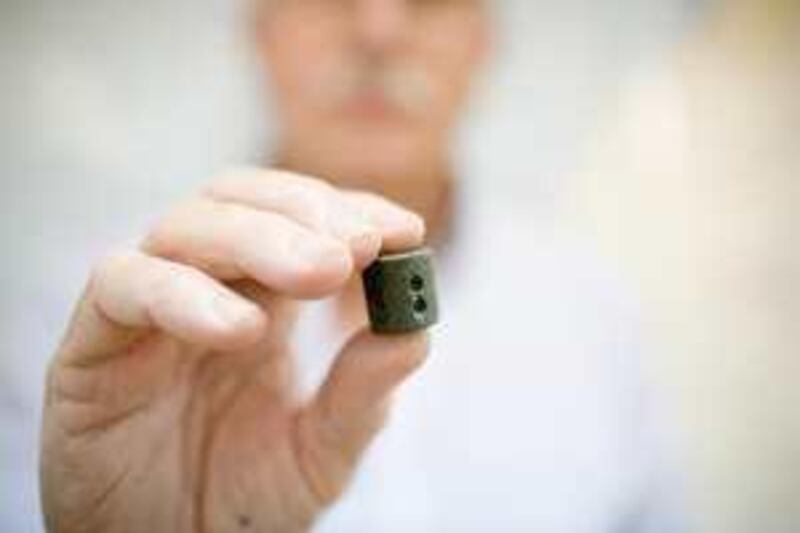ABU DHABI // For 5,000 years, the tiny cylinder of stone lay forgotten in the desert at the edge of the Empty Quarter. If not for a chance visit by someone whose eye had been honed by a career spent noting the most subtle differences in the environment, it would still be there now, instead of rewriting part of the ancient history of Arabia. For the past two years, Kim Burke, an Australian soil scientist, had been part of an Environment Agency - Abu Dhabi (EAD) team taking samples from about 50,000 sites across the emirate when his schedule brought him to a location near Madinat Zayed. "In our job, you have to identify rocks in the survey because it gives you an idea of the soil formation and where the soil comes from. "After a while your eye becomes trained," he said. "I was wandering around making notes about the different types of soil and surveying the rock and vegetation. "All the rocks in the area are black and dark brown, then I saw something that was a different colour. At first I thought it was plastic then I looked at it and saw these patterns on it." What Mr Burke had found last summer was a stone cylinder seal that, for Bronze Age Mesopotamians, was a way of proving their identity and provenance. What it lacked in size - slightly fatter and shorter than the last joint of Mr Burke's little finger - was made up for by its importance, because it was the first time an artefact of its age and type was been found in the Arabian Peninsula. Mr Burke took it back to Abu Dhabi and, through EAD, was put on to Peter Hellyer, the former executive director of the Abu Dhabi Islands Archaeological Survey, who has been studying the archaeology of Al Gharbia for 15 years. He suggested that photographs of the seal - including its imprint rolled out on to a piece of Blu Tack the Burkes had lying around, replicating the way the seal would have been used on wet clay 5,000 years ago - should be e-mailed to one of the world's leading experts in the history of the area, Prof Dan Potts, at the University of Sydney, Australia. Prof Potts, a Harvard University-educated authority on the Fertile Crescent from which modern civilisation stemmed, was able to identify it "unquestionably" as an import from what is now southern Iraq. The distinctive markings indicated it was from the ancient city of Uruk and he said it was most likely from the brief Jamdat Nasr period. "Extremely interesting! This is a definite Jamdat Nasr-style seal ... dateable therefore to circa 3100-2900 BC, and unquestionably a Mesopotamian import," the professor wrote. "It's a classic type with pig-tailed women, ladder-like motif (couch), and spider. There are women, usually pigtailed, squatting ... sometimes on couches in a row." The spider was a common theme in Sumerian mythology, in which Uttu, the goddess of weaving and clothing, is often depicted as a spider. The Jamdat Nasr era dates from near the start of the Bronze Age, which spanned the years 3100BC to 1200BC. For Prof Potts, one of the most interesting aspects of the Madinat Zayed find was its style, different to cylinder seals, dated at between 400 and 1200 years older and found in places such as Hili on the outskirts of Al Ain. Mr Hellyer said the location of the find was equally interesting. There had been no previous publications of Bronze Age remains from the middle of Al Gharbia, the western desert of the UAE. "Sites from the Bronze Age are known from the coast and islands of Al Gharbia, but nothing from this period has ever been reported from the central and southern deserts of the area," he said. "There is pottery of the same date found in Al Ain [but] this is the middle of the deep desert. We've got plenty of stuff from the late Stone Age and then the climate got a lot drier and a lot of lakes dried up. In the western desert, we've got virtually nothing else from the end of the late Stone Age until the late Islamic period, covering the last few hundred years." jhenzell@thenational.ae
Rewriting part of Arabia's ancient history
Discovery of a stone seal dating back 5,000 years is the first Bronze Age Mesopotamian evidence found in the Madinat Zayed region.

Editor's picks
More from the national





